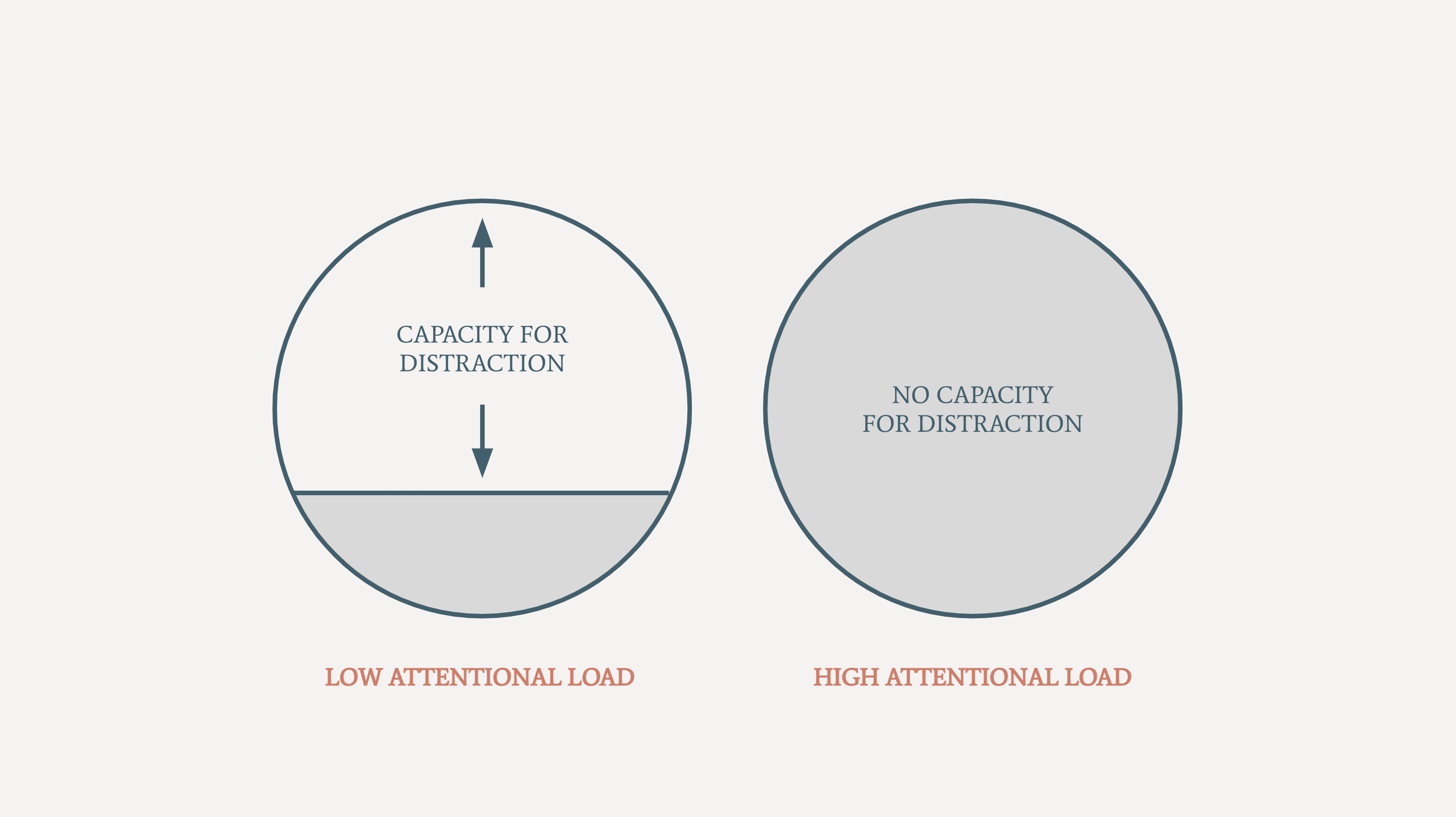Keeping a focused mind is hard. Imagine you’re working on an important report due tomorrow. As you start writing, your phone lights up with a text from a friend. Your natural curiosity makes you wonder what the message says. Do you give in and check your phone, or do you stay focused on the report?
Every day, thousands of choices like these happen inside your brain. It’s a constant battle between your primal need to know what’s going on around you and your desire to create great work.
While curiosity and focus may seem like opposing drives, they’re actually deeply intertwined. By understanding the neuroscience of attention you can learn to intentionally direct and sustain your curiosity to achieve your ambitions.
The Science of Intentional Curiosity
To understand intentional curiosity, we first need to understand the concept of the attentional field. Your attentional field is the combination of everything inside you—thoughts, emotions, physical sensations—and everything outside you, including what you see and hear. It encompasses all the information competing for your brain’s limited attentional resources.
When you’re working on something and receive a notification, two parts of the brain are involved in managing your attention within this field. The prefrontal cortex, directly behind the forehead, is activated when you start concentrating. The parietal cortex, behind the ear, is activated by distracting events.
Research shows these two regions process information differently. The prefrontal cortex emits slower frequency pulses of electricity, which are associated with focused attention and goal-directed behavior. In contrast, the parietal cortex emits faster frequency pulses, enabling quick responses to unexpected stimuli and automatic processing of information.
Long ago, you would have used your prefrontal cortex when working on a tool or building a shelter, but your parietal cortex would have been instantly activated if you heard a strange noise or were attacked by a wild animal. Thus, the parietal cortex is originally a survival tool, ensuring that we can switch our attention to more pressing matters if something urgent happens.
In today’s world, the sources of distractions are constant, and less likely to be critical to our survival. We get interrupted by a never-ending flow of competing cues and information, and it becomes harder to sustain our attention for longer periods of time.
Intentional curiosity is the ability to direct your attention towards information inside or outside of you in a deliberate way. Researchers argue that “curiosity addresses the challenge that deliberating about how to allocate attention relies on, and therefore draws down, the same serial information-processing faculties that one is seeking to allocate.”
In other words, curiosity helps us direct our limited attentional resources to the most important stimuli within our attentional field.
Adventures in the Attentional Field
Navigating your attentional field can be challenging, with countless stimuli competing for your limited cognitive resources. Distractions, both internal and external, can easily pull your focus away from the tasks that matter most. However, by cultivating intentional curiosity, you can effectively manage these distractions and strengthen your ability to focus.
1. Remove obvious distractions. Put your phone away. And by away, I mean in another room. If you work in an open space, put your headphones on to dissuade people from talking to you. And if you’re tempted to check social media on your laptop, install an app that will prevent you from accessing them for a set amount of time.
2. Increase your attentional load. The Load Theory of Attention posits that because attention is a limited resource, filling all the additional “slots” in your mind may leave no room for other distractions. This is why some people work better when having a bit of background noise or listening to music while in focused mode. Experiment with adding deliberate distractors so your curiosity doesn’t get derailed.

3. Monitor your mind. However intentional you are, you will get interrupted by internal or external distractions at one point or another. When faced with a distraction, be curious about why it’s pulling your attention. Is it truly important, or just a fleeting impulse? By evaluating the nature of the distraction, you can more easily redirect your curiosity back to your main task, or identify curiosity attractors you might want to explore further at a later point.
4. Make space for mind wandering. While studies suggest that letting your mind wander too often can have a negative impact on overall performance in your daily life, scientists have found that closing your laptop and daydreaming for a few minutes has a positive impact on cognition. See where your mind wants to go when you let it follow its curiosity. You can even take some notes afterwards to record any interesting thoughts.
5. Strengthen your curiosity. Make it a habit to be curious about everything in your life—your inner landscape, external events, new interests, and the people around you. By drawing connections between all these areas of your life, you’ll notice that what may seem like a distraction on the surface can be the seed of a project.
Most importantly, remember that intentional curiosity is not about never losing your focus—which would be unrealistic—but about monitoring your attention and using simple strategies to bring it back to the task at hand when you get distracted, while keeping track of recurring sources of curiosity so you can explore them further in a deliberate way.
It requires both self-awareness and self-compassion to gently bring your focus back to the task at hand while embracing serendipitous creativity and the generative potential of so-called distractions.
